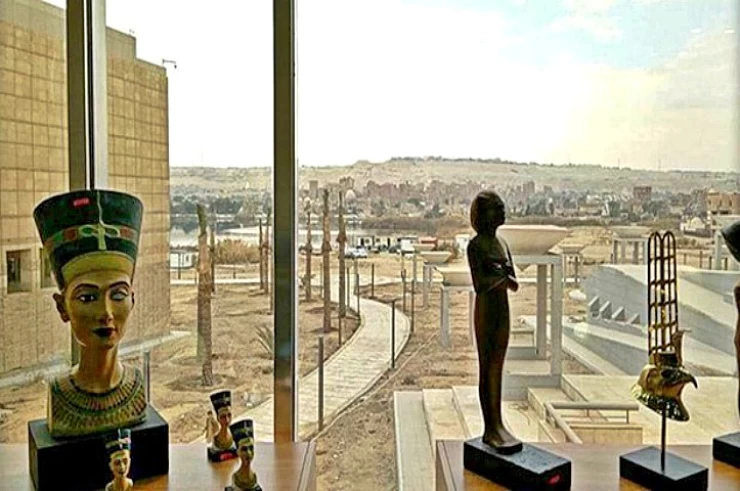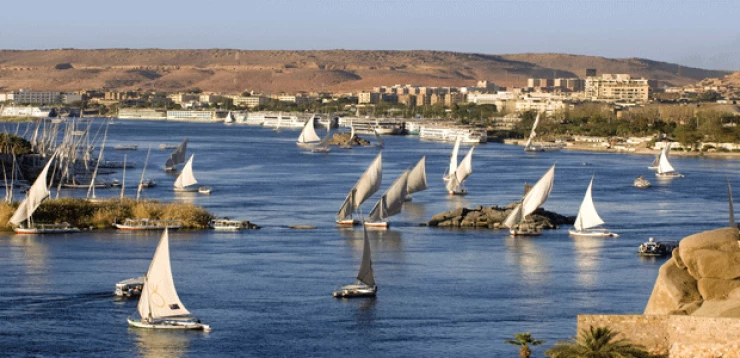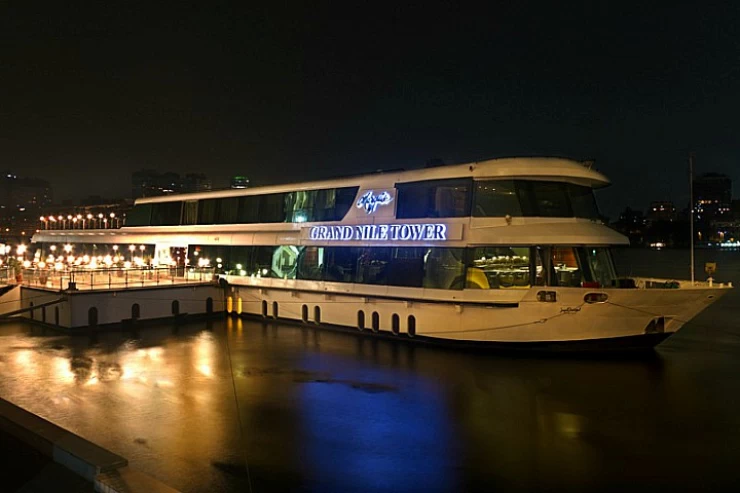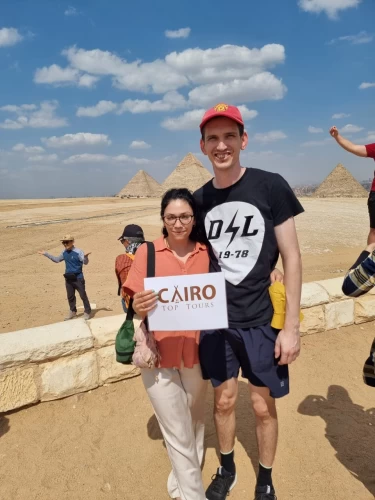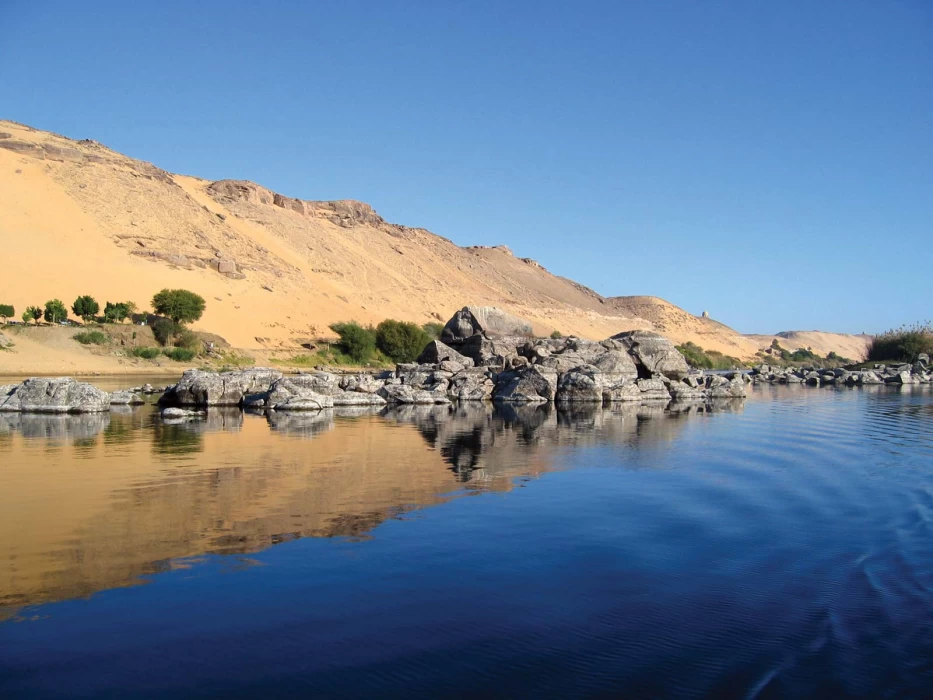
Le Nil
Le Nil
Le plus long fleuve du monde est formé par les Nils Blanc et Bleu. L'une des caractéristiques les plus remarquables du Nil est que c'est le fleuve qui monte au sud et se jette au Nord. Les deux affluents du Nil, le Nil Blanc et le Nil Bleu, se rejoignent dans la capitale soudanaise, Khartoum. De là, le voyage sur le Nil commence jusqu'à son embouchure dans la mer Méditerranée, à l'Est d'Alexandrie. Le Nil est le plus long fleuve du monde, car il s'étend au sud de l'équateur et s'écoule vers le Nord-Est. Couvrant 3 349 000 km2, le bassin comprend 11 pays africains: «Ouganda, Érythrée, Rwanda, République démocratique du Congo, Tanzanie, Burundi, Kenya, Éthiopie, Soudan du Sud, Soudan et Égypte». Le Nil est considéré comme la principale raison du développement de la civilisation égyptienne il y a des milliers d'années, selon les écrits de l'historien grec ancien Hérodote qui a déclaré que l'Égypte est le don du Nil, où les terres arides du désert en Égypte sont devenues fertiles terres en raison de la formation de dépôts de limon le long des rives du Nil. Ce qui a conduit à la croissance de la civilisation égyptienne antique, elle était cultivée par le blé, le lin et le papyrus le long des rives du Nil.
Le Nil en Égypte s'étend de la frontière nord du lac Nasser à Assouan au Nord du Caire, où le Nil est divisé pour former le delta du Nil en deux branches, Rashid et Damiette. Dans les temps anciens, les Égyptiens primitifs s'installaient le long des rives du Nil où ils construisaient des maisons simples et des chalets pour se loger, cultivaient de nombreuses cultures, et depuis lors, les premiers pas vers la gloire égyptienne avaient commencé. La culture a été le point de départ lorsque le Nil s'est arrosé, transportant des dépôts de limon qui couvraient les terres le long de la vallée du Nil et les rendaient fertiles. Le blé était le premier produit que les Égyptiens de l'Antiquité cultivaient, dépendant des inondations du Nil comme solution à la menace de la faim et du manque de nourriture à cette époque. De l'autre côté, ils utilisaient certains animaux tels que les buffles d'eau et les chameaux pour se nourrir, labourer et transporter des marchandises.
Plus de 95% de la population de la République égyptienne vit sur les rives du Nil, et de cette manière, la vallée du Nil est l'une des zones les plus densément peuplées du monde, avec une population moyenne d'environ 3820 personnes par 1,61 carré. kilomètres, et la raison en est que le Nil est l'élément vital de la République égyptienne, où les agriculteurs produisent de grandes quantités de cultures différentes telles que les agrumes, le coton, le blé, la canne à sucre, les légumineuses et le sorgho. Malgré le succès des programmes agricoles dans le bassin du Nil, les flux du Nil sont encore faibles dans certains pays, c'est pourquoi l'Initiative du bassin du Nil a débuté en 1999. Afin d'aider ces pays à profiter des cours d'eau.
Dans le cadre des intérêts des anciens pharaons de la vie religieuse et de leur insistance à créer de nombreux dieux et déesses pour les éléments physiques. Ils ont honoré le Nil en créant Sobek «Dieu du Nil» ou il a été nommé «Dieu du crocodile» le le dieu d'un homme à tête de crocodile représentait la fertilité, les zones humides, la médecine et la mort subite et le Nil est considéré comme la sueur de Sobek. Un autre dieu lié au Nil dans l'Égypte ancienne est «Hapi», il est appelé «Seigneur de la rivière apportant la végétation» ou «Seigneur des poissons et des oiseaux des marais», le dieu des crues annuelles du Nil qui contrôlait grandement le niveau de l'eau.
Vous pouvez voyager en Égypte et naviguer sur le Nil à bord d'une croisière sur le Nil en Égypte et d'une croisière sur le lac Nasser. Cairo Top Tours propose les meilleures offres et offres pour les circuits classiques en Égypte, les circuits privés au Caire, les forfaits de voyage en Égypte, les excursions en Égypte, la journée au Caire et excursions d'une journée au Caire depuis l'aéroport, pour satisfaire les souhaits des voyageurs concernant les lieux historiques et les différents musées en Égypte. Les représentants de Cairo Top Tours vous aideront tout au long de vos forfaits classiques en Égypte et couvriront la majeure partie du pays des pharaons. Réservez maintenant pour une grande expérience de vacances en Égypte et de forfaits de vacances en Égypte et de circuits en Égypte et vivez l'expérience de réserver des manèges en felouque au Caire et de visiter l'Égypte.
Des circuits en Egypte remarquables et sûrs ! Avec nos circuits de Pâques en Égypte 2023, vous ressentirez la grâce de l'esprit antique des Égyptiens en explorant les majestueuses pyramides, les temples, les tombeaux qui hantent votre esprit et votre âme tout en bénéficiant du meilleur service. Des meilleures croisières sur le Nil aux forfaits classiques de visites de sites historiques, Cairo Top Tours propose une gamme d'activités et de vacances d'aventure en Égypte. Outre les sites historiques traditionnels, nous proposons une sélection distinctive de safaris dans le désert égyptien à travers le silence magique et l'attrait des oasis de Siwa, dans le désert égyptien. Choisissez parmi les meilleures offres d'excursions d'une journée en Égypte et choisissez l'une de nos superbes excursions d'une journée au Caire. Nos passionnantes excursions à Louxor et excursions à Assouan vous feront découvrir tous les chefs-d'œuvre historiques de la ville. Notamment la fascinante Vallée des Rois, le fantastique temple de la reine Hatchepsout et les temples uniques d'Abu Simble, le tout accompagné d'un guide expert qui vous expliquera l'histoire de ces incroyables sites. Nous ne ménageons aucun effort à Cairo Top Tours, pour vous apporter un plus valu de nos circuits et excursions en Égypte.
Disregarding its claim to being the longest river in the world, the Nile epitomizes all that is Egypt in terms of geography, history, and culture. The Nile is located in the northeastern region of Africa and is about 6,650 kilometers long (4,130 miles), running through 11 different countries before emptying into the Mediterranean Sea. Nevertheless, the most well-known portion of the river is certainly in the country of Egypt, where not only has the river formed the present-day geography of the place but also sustained one of the most ancient and greatest civilizations in the world. It is often referred to as the ‘Gift of the Nile’. Most of the wealth, progress, and history of Egypt have revolved around this river.
Egypt boasts of long stretches of deserts, but it is interesting to note that the Nile River has succeeded in forming a vegetative zone in the region otherwise characterized by dry lands. Without the Nile River, the majority of regions within this nation’s borders would more likely than not be empty and unproductive land. It supplies water, which is sourced for farming, business, and even household use. In ancient times, the Nile used to spill over its banks, and every year the lands along the river, such as the region around the Nile, received rich alluvial deposits that were excellent for farming. These floodwaters every year without fail were perfect for growing crops for the ancient Egyptians, who grew different crops such as wheat, barley, and flax, which were the main food and agricultural income of this community.
Today, while the Aswan Dam was built in 1970, which led to the complete control of tree flooding and therefore the abolition of the age-old flood regime, the Nile River is still of great importance for agriculture in Egypt. Filmy green container siding strips that fit perfectly along the banks of the river, which is reminiscent of the shape of the river, sharply contrast with the yellow sand canvas of the desert, indicating that the Nile River is of key importance to the people of Egypt.
The Nile was an important resource for agriculture, but its relevance does not end there; much of today’s world owes its existence to Egypt as we know it. Civilizations flourished on both banks of the ancient Nile as it provided not just water and rich alluvial plains, but also integrated the two banks using transport and communication. The river was crisscrossed by boats transporting goods, people, and ideas, effectively bridging the gap between Upper and Lower Egypt and emerging as one of the most powerful kingdoms.
Furthermore, the river found its place also in the divine and cultural aspects of the ancient Egyptians. The floods of the river, which were very important for agriculture, were treated in ancient times as a curse from Hapi, the protective god of the fertile Delta and the Nile. The river was also linked with the idea of death and what came after it. The Egyptians believed that the east side of the Nile River where the sun rose was the region of the living, while the west side where sunset occurred was the realm of the dead. This explains why some of the country’s most popular structures, including the Great Pyramids and the tombs in the Valley of Kings, are located on the western bank of the river.
The legacy of the Nile is inscribed in the very topography of the nation of Egypt, with nearly all its iconic representations located along the banks of the river. In Cairo, for instance, west of the Nile runs the Giza Plateau, which houses the Great Pyramid among other pyramids, and the infamous Sphinx that has stood for more than 4500 years. The stones used to create these buildings rose from within the depths of the Nile and were transported therein, thus revealing the contribution of the river towards the architectural peculiarity of Egypt.
Going further down south to Luxor, yet another ancient hub, the Nile cuts across it. East Bank consists of the vast temples of Karnak and Luxor, which were the places of worship for the exalted pharaohs. West Bank is characterized by the flat surface of the Valley of the Kings, which hosts the burial places of the most powerful kings’ in Egyptian history, with the famous King Tut’s tomb being one of them. It was the Nile that linked those cities and the temples, and the Nile waters flowed in bringing the resources necessary for erecting such remarkable edifices.
One of the striking cases of the power of the Nile on Egyptian monuments might be the temples of Abu Simbel, which are found on the southern border of Egypt close to Sudan. Colossal temples were carved by the mountain by Ramses II, and since they are located close to the river, there was a risk when the Aswan High Dam was being built. In an astonishing engineering accomplishment, the temples were moved to a higher location to protect them from the adverse effects of the water levels of Lake Nasser, an enormous reservoir that was built because of the dam. At this point, they are both an ancient and contemporary reminder of the connection that Egypt has with the Nile.
The Nile is still an integral aspect of modern-day Egypt. The river is still used for irrigation and even provides drinking and industrial water. It has also maintained its relevance as a waterway, and especially as a tourism-based route. Cruises on the Nile between Luxor and Aswan allow tourists to experience the beauty of the river and, along the way, some of the exotic historic sites of Egypt. This pace of the river sets the mood for temple, tomb, and village raids, which are fun-beholding sights of historical Egypt.
The Nile has been a major factor in the growth of cities like Cairo, Aswan, and Luxor. In Cairo, the Nile passes through the very middle of the populated city, providing a serene gate away from the noisy road. Corniche El Nile, which is a wall fronting the river in the city, is frequented by people, both locals and tourists, who go there to see the river, and particularly sunsets are breathtaking. Calm sailing wooden boats called feluccas move on top of the river, recalling the magic of the serene Nile.
Aswan is characterized by the majestic flow of the Nile that meanders, surrounded by patches of granite and tiny islands, providing an ideal ambiance to learn about the Nubian culture and Philae Temple. The slower-paced atmosphere created by the clear waters in Aswan makes it one of the most captivating places along the Nile, where visitors feel relaxed as if everything is flowing with the river at a gentle pace.







